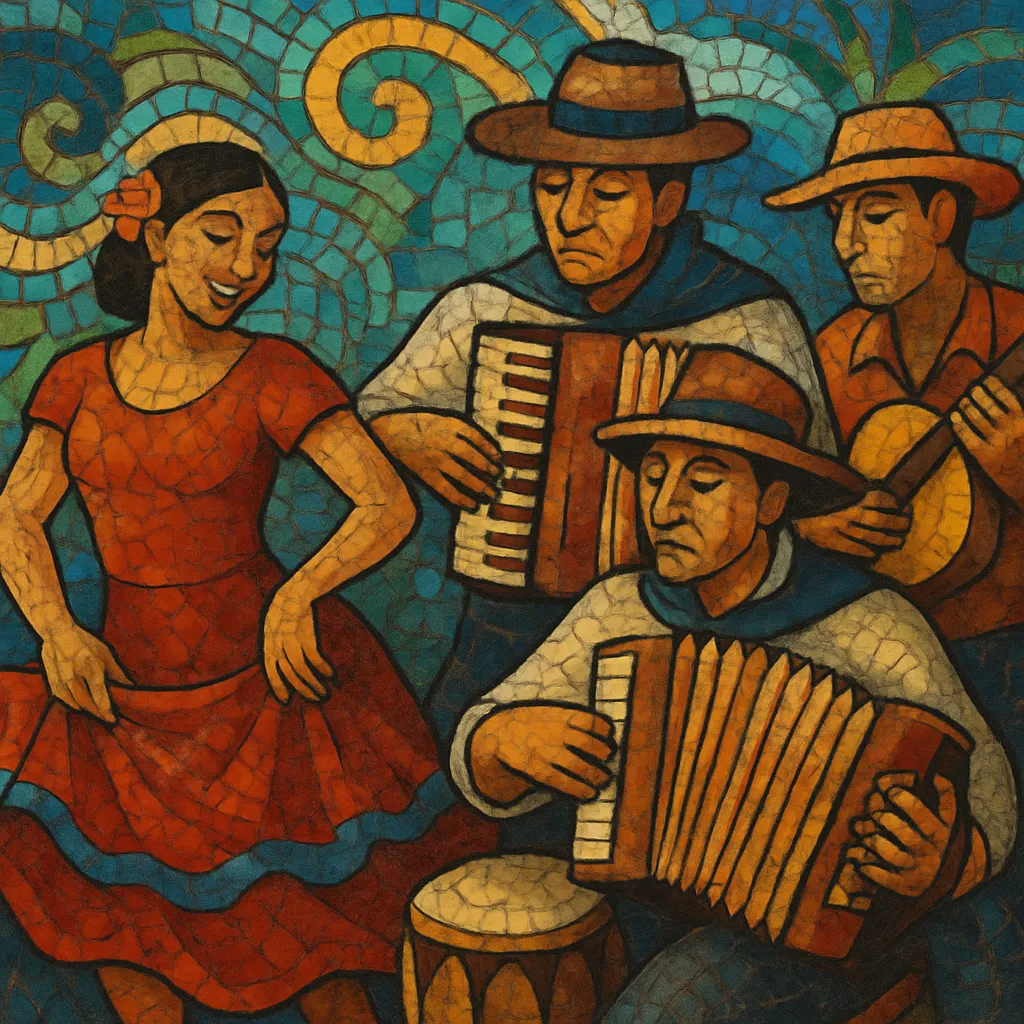Cumbia argentina is the Argentine adaptation of Colombian cumbia that took root in the 1960s and evolved into a family of local styles. It blends the syncopated cumbia groove with regional tastes, instrumentation, and social realities in Argentina, producing variants such as the accordion‑led cumbia santafesina, the synth‑driven and street‑narrative cumbia villera, and radio‑friendly cumbia pop.
Typical arrangements feature the cumbia beat on drum kit or programmed drums, congas and güiro driving the off‑beat swing, bass guitar outlining a steady tumbao, and lead voices supported by call‑and‑response coros. Depending on the substyle, melodies are carried by accordion, electric guitar, or bright keyboards. Lyrics range from romantic stories and dancefloor invitations to depictions of barrio life, celebration, and struggle. The result is a dance music that is both festive and deeply tied to Argentine urban and provincial identities.
Cumbia entered Argentina in the 1960s through migrant communities, touring bands, and records from Colombia and the Caribbean. Early ensembles based in Argentina, such as Los Wawancó, popularized Colombian cumbia locally, adapting repertoire to Argentine dance halls. By the 1970s, regional scenes emerged—most notably in Santa Fe—where accordion, guitar, and romantic lyrics shaped what became known as cumbia santafesina.
Through the 1980s and 1990s, cumbia argentina spread nationwide as a core of the broader “música tropical.” Bands incorporated electric bass and drum kits, brighter keyboards, and show‑band aesthetics. Acts like Los Palmeras, Grupo Trinidad, Amar Azul, and Ráfaga brought the sound to mass audiences, while romantic and dance‑floor subcurrents coexisted under the same umbrella.
Amid late‑1990s social and economic crisis, cumbia villera emerged from working‑class neighborhoods with raw synth timbres, minor‑key harmonies, and lyrics depicting street realities and everyday survival. Damas Gratis spearheaded the sound, which quickly became influential across the Southern Cone. In parallel, figures like Gilda and Antonio Ríos helped cement cumbia’s mainstream appeal, bridging dance music with heartfelt balladry.
From the 2010s onward, cumbia argentina interfaced with electronic production and pop formats. Digital cumbia scenes incorporated sampling and club‑oriented low‑end, while cumbia pop bands and cover projects reimagined rock and pop hits for the dance floor. The genre’s rhythmic DNA also fed into newer hybrid club styles like RKT, ensuring cumbia argentina remains central to Argentina’s musical identity and a reference point across Latin America.


